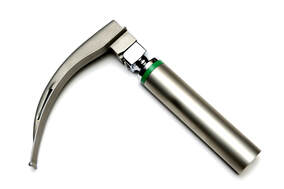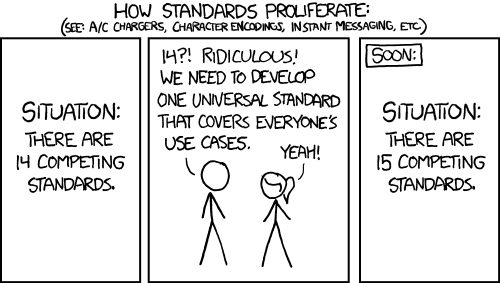
Opening
Awake Videolaryngoscopy
The link to the topic was that some features of awake fibre optic intubation (AFOI) may be acting as a barrier to its use because of how it feeds into our decision making. Because of its relative unfamiliarity to a number of anaesthetists, as well as the often perceived undesirability for the patient, there may often be enough to convince practitioners that it actually isn’t needed, even in cases when an awake approach probably would be safer. This is compounded by some of the recognised challenges that we have for adequately assessing the airway preoperatively. This is highlighted nicely in this Cochrane review (here) that shows how, although the specificity of many of the airway assessment tests is pretty good, the sensitivity is not. This isn’t really what we would desire in a screening test.
One of Dr Smith’s points was that the use of awake VL may not share some of these drawbacks of AFOI. I think we are all becoming increasingly comfortable with VL, including more than one brand, and so this moves it quite a bit closer to routine practice. If you are interested in reading more about this technique, it is described in an article in the RCOA Bulletin last year (here). Is there much evidence about using it? Well this paper (here) describes a bit more about the comparison of VL with AFOI and doesn’t really identify a clear difference. Overall, this does seem like a very interesting alternative approach to the difficult airway. Although there are some clear limitations (impaired mouth opening is going to be pretty insurmountable challenge), the generally increased familiarity of anaesthetists with VL is advantageous. And the rest of the technique is not that different from AFOI. I did get Dr Smith’s point that this is a skill set that may be easier to develop and maintain that AFOI for anaesthetists outside of major ‘airway’ centres, and as such can serve as a very useful tool for those cases of a potentially difficult airway.
The Vortex Approach
The proside of the debate was well argued by Dr Pete Groom. The advantages described related to many of the human factors that are at play in the horror-show of a CICO scenario. The model of the Vortex can supposedly improve this team communication, providing a shared model for the whole team to work with. The visual representation of the Vortex, along with the prompts included alongside it (suction, neuromuscular blockade, adjuncts). The simulation training he had done with the team as his local site had shown positive results in terms of performance and participant satisfaction with this approach.
Professor Akbar Vohra led the ‘con’ side of the debate. A key opening point was that the DAS CICO guidance still fulfilled many of the advantages ascribed to Vortex. He went back through a number of the previous work on CICO over previous decades and the majority of the messages were the same: recognition of the human factors, train at the basics, prepare appropriately. He argued that the focus of learning should be elsewhere in the process, such as focusing on developing expertise in the core skills involved in airway management. Be a reflective learner, identifying how you can develop competencies to the point of mastery so that these can make the difference in outcome. If you need to use a CICO algorithm, finding a fancy new one is pointless, as this is probably not where the benefits arise. The benefits are more to be gained from not getting there in the first place, and if you do find yourself there, the Vortex model has no clear benefits over the others, such as DAS.
My personal impression is that the Vortex approach doesn’t add much above the DAS algorithm, and being someone who has had most of my CICO training based around this, I don’t see the justification for a change. Having a suitable approach is clearly essential, but I worry that trying to change this approach risks adding additional variability in practice, for little extra benefit, which in itself my impart risk. I will admit that I have no direct experience with using it, and I may find that if I get chance to do simulation with it I will be converted by its practical benefits. Indeed, if we could start again from scratch I appreciate that the Vortex approach is valid, but that is not the current state of things. I will look into it some more when I get chance, but I have just not been able to be convinced of the clear benefit above what we already have.
A link to some further reading on the Vortex Approach is available here.
Research
Whilst I won’t go on about it much here, I was very grateful to have the opportunity to attend on behalf of NWRAG and present an update on current and future projects. If you are trainee in the Northwest and have any sort of interest in QI, research and/or audit work, be sure to visit our website to see what activities are going on and what opportunities there are for getting involved. The key one to let you know about is our current project aiming to better explore how we assess frailty in our patients perioperatively (if we do). It’s led by Dr Ananya McCarthy and at the current stage is a fairly straightforward survey investigating clinician understanding of frailty and exploring the systems in place at different sites. We have a number of local leads taking this forward at most sites across the region, but If you haven’t yet heard about this and are keen to get involved please get in touch through our website.
Cases
These cases had a few common themes running through them. I think the main one that I want to highlight is that the human factors at play in situations like this are really important. Managing difficult airways, especially with an acute presentation, needs a whole range of non-technical skills, from maintaining situational awareness through to skilled communication within a team. Every time I hear about situations like this I repeatedly think to myself “that would a really good thing to do some simulation on”, and I do think that there are big potential benefits here (although still need to get around to organising anything like this). Whilst some of these skills can really be developed in regular clinical experience, I keep coming across cases which combine a perfect storm of rarity, acuity and ‘speed of disaster’ which makes in my mind makes it harder to apply many of our other skills. I hope to look at simulation in more detail at another time, and given the length of this post already I’ll wrap things up here.
BW
Tom
Links & Further Reading
- The Vortex Approach. http://vortexapproach.org/
- Roth, D. et al. Airway physical examination tests for detection of difficult airway management in apparently normal adult patients. Cochrane Database Syst Rev. 2018. https://www.ncbi.nlm.nih.gov/pubmed/29761867
- RCOA. Bulletin 111. 2018. https://www.rcoa.ac.uk/document-store/bulletin-111-september-2018
- Alhomary, M. et al. Videolaryngoscopy vs. fibreoptic bronchoscopy for awake tracheal intubation: a systematic review and meta‐analysis. Anaesthesia. 2018. 73(9):1151-1161. https://onlinelibrary.wiley.com/doi/full/10.1111/anae.14299
- North West Research & Audit Group. www.nwrag.co.uk.

 RSS Feed
RSS Feed
